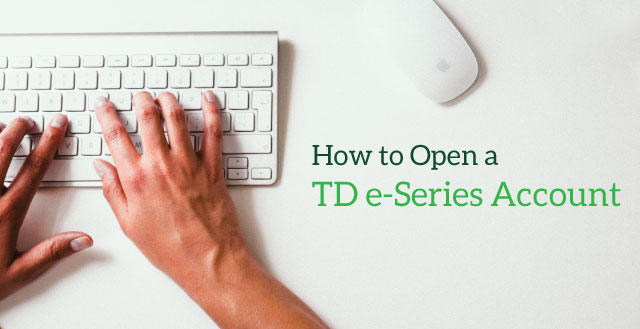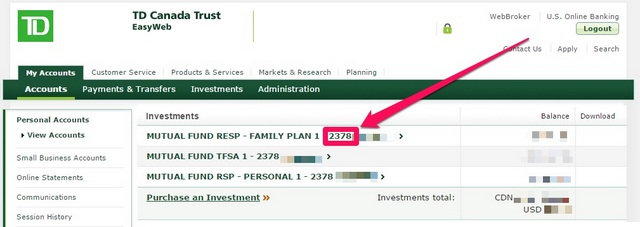It took three weeks, but we finally got around to sorting out our budget and financial goals for 2015. Putting together our budget for the new year was difficult; not only are there going to be a few unknowns, we’re are going to be taking on less income with more expenses. 2015 will be quite a year for us here at Urban Departures…
You’ve probably seen the ads around everywhere: RBC will give you $50 visa gift card for a face-to-face opportunity to prove their bank can offer better products and services. I, genuinely interested in their services and more so the gift card, booked an appointment to check out the RBC Banking Statement Challenge, giving them the chance to pitch their timeshare. I went to visit a RBC branch near work during my lunch hour one day.
Okay, we’ve just tallied up our savings for 2014 to calculate our annual savings rate. We started the year with a goal to save 25% of our gross income, which would include our company contributions to our RRSPs, and maintain a monthly savings rate of 24% of our net income as per our 2014 budget. This is how we fared:
There’s one thing in common for those looking to open a TD e-Series account by mail or by person: you’ll need to answer a couple questions in the Investor Profile Questionnaire. The purpose of the questionnaire is to assess the comfort level of the investor and to assign a general target asset allocation.
If you opt to mail in the application to open the e-Series account, you’ll need to fill out the application form. The form includes instructions on how to determine your recommended allocation and you can modify the answers as many times as you like to get the asset allocation that you want.
If you’re opening an e-Series account in person at a branch, a bank representative will take you through the questions. If you don’t get your desired asset allocation, you can ask the representative to change the answers until you get your desired allocation if they allow it.
Filling out the questionnaire can be a little tedious and was frustrating the first time I wanted to open an account. Let’s take the guess work out of the equation and answer the questions to get the asset allocation that you want.
In the second season of NBC’s TV show 30 Rock, Jack Donaghy awards Liz Lemon the “G.E. Followship Award” (given to the employee who best exemplifies a follower), a prize worth $10,000 in cash. Donaghy, her mentor, asks her, “So what are you gonna do with your money? Put it into a 401(k)?”
Liz gives a blank stare and responds, “Yeah, I gotta get one of those.”
“What? Where do you invest your money?”
“I’ve got like twelve grand in checking,” Liz responds
Jack gives her a bewildered look: “Are you an immigrant?”
I remember the scene not only because it was hilarious, but because it so accurately reflected my own situation from a few years ago. Apart from being an immigrant, I knew I was supposed to be investing but had no idea where, how or in what. I first read about the TD e-Series index funds in Andrew Hallam’s Millionaire Teacher. At the time, I thought that there was no way a comprehensive investing strategy could consist only of a few indexed funds. I soon came across the Canadian Couch Potato’s Model Portfolios and blog which reaffirmed what was laid out in the book. This passive indexing approach takes 15 minutes of work per year, will out perform the majority of financial professionals over time and could be managed by a 7 year old. I decided that this was the place to start.
Well, if you’re want in on the same and don’t know where to start, look no further. Here is step-by-step guide on how to open account to buy TD e-Series index funds.
A Snapshot of the TD e-Series Index Funds
The TD e-Series funds are a type of passively managed mutual fund that tracks a specific index (for example, the S&P/TSX Composite Total Return Index). Combining several of these e-Series index funds can result in a simple yet diverse portfolio consisting of hundreds of companies with exposure from markets around the world. These funds come at a low cost to the investor because they are managed exclusively online with TD. Below is a quick summary of its advantages and disadvantages:
Benefits:
- MERS from 0.33% to 0.55% for passively managed index funds.
- No transaction fees to buy or sell funds.
- The Pre-Authorized Purchase Plan (PPP) allows for automatic recurring (bi-weekly, monthly) purchases starting from $25.
- Funds track broadly diversified indexes.
- TD e-Series funds can be held in registered accounts including the RRSP, TFSA and RESP where gains are tax sheltered.
Cons:
- Funds can only be bought through TD Canada Trust, not through other brokerages.
- Self-directed, meaning there is little to no branch or customer support.
One last note, all interaction with with the e-Series funds- buying or selling- is through TD’s online banking tool called EasyWeb or the TD Direct Investing platform called WebBroker.
The Urban Departures Guide on How to Open a TD e-Series Account
There are two ways to purchase TD e-Series funds. The first method consists of opening an e-Series enabled mutual fund account with TD Canada Trust. Alternately, TD e-Series funds are available through the bank’s investment arm TD Direct Investing.
The Difference Between a TD Mutual Fund Account and a TD Direct Investing Account
A TD mutual fund account can only purchase TD products through TD’s online website, EasyWeb. The e-Series mutual funds are a TD product, and can only be purchased through a TD mutual fund account that has been converted to accept e-Series funds. There are no administration fees associated with opening or converting a TD mutual fund account.
In addition to purchasing regular TD mutual funds, including the TD e-Series mutual funds, a TD Direct Investing account allows the investor to purchase mutual funds, stocks, bonds, etc. from any third party financial institution. There are no costs associated with buying or selling TD e-Series Mutual Funds, however, there are costs associated with purchasing other securities.
Additionally, account administration fees apply. Household accounts (i.e. combined TFSA, RRSP) with total assets less than $15,000 are subject to a $100 annual fee ($25/quarter) while accounts over $15,000 have the fee waived.
The Steps to Opening a TD e-Series Account*TD Direct Investing Commission Schedule and Statement of Disclosure of Rates and Fees
We’ll take a look at both methods step-by-step.
Method #1: TD e-Series funds through TD Mutual Fund Accounts
Option A: Mail in the Application Form to Open a TD e-Series Account
- Download and complete the TD e-Series Funds Account Application and Investor Profile.
- Mail the application to the address listed in the form.
- If you would like the funds to come from an account other than TD, include a void cheque of the desired account to identify the bank from which purchases will be made.
- Once the signed and completed applications have been received, the account can be opened. You will receive an email confirmation with details on how to access the TD e-Series account using EasyWeb.
NOTE: This method works only if you are an existing customer with TD since opening these accounts requires the verification of ID. Also, the application form method is only suitable for opening Registered Savings Plans, Personal Non-Registered and Joint Non-Registered accounts. For e-Series enabled TFSA and RESP accounts, refer to Option B.
Option B: Open and Convert a TD Mutual Fund Account
- Print and fill out the TD Mutual Funds Account Conversion Form.
- Step into a local TD branch and meet with a mutual fund representative to apply for a TD mutual fund account. Bring your Social Insurance Number (SIN) card and another piece of ID.
- Request to open a regular TD mutual fund account and make no mention of your desire to convert it to an e-Series account.
- You will be asked to provide answers to a questionnaire that will determine your investor profile.
- Once the account has been opened, present the Account Conversion Form and have the representative mail it to the designated address. The process may take up to two weeks.
NOTE: You can choose to open an RRSP mutual fund account, TFSA mutual fund account, RESP mutual fund account or unregistered mutual fund account.
In both cases, once the account has been converted to be e-Series compatible, the account number showing in EasyWeb well begin with 2378 and you will be able to purchase TD e-Series mutual funds.
Method #2: Buying e-Series funds through TD Direct Investing
- Call 1-866-666-6178 to book an appointment at your nearest TD Canada Trust location.
- Step into a local TD branch to open a TD Direct Investing account. Bring your Social Insurance Number (SIN) card and another piece of ID. Alternately, you apply for an account online but not all account types are available this way.
- Once the account has been opened, you will be able to purchase TD e-Series mutual funds via WebBroker.
For Your Consideration
Here are some things to keep in mind as you begin your TD e-Series investing adventure:
- The minimum investment amount for TD e-Series funds is $100.
- A Pre-Authorized Purchase Plan (PPP) is available and allows investors to invest as little as $25 per fund on a monthly basis.
- While there is no cost to buying or selling TD e-Series funds, there is a 2% Early Redemption Fee (ERF) for units sold within 90 days of purchase.
- If you are opening a TD mutual fund account and do not have an account with TD, the representative may insist that you need to open an account with TD. This is not mandatory as the mutual fund accounts can be linked to other banks. If you are so inclined, you can open a no fee TD Everday Savings Account.
- There are no fees associated with transferring your TD Mutual Fund accounts to TD Direct Investing account. Contact the bank to request a transfer your funds ‘in-kind’ where by they will not liquidate your holdings, but conduct an internal transfer. Keep in mind, fees do apply if you do not meet the minimum balance requirements.
The Last Word
There you have it. Now you know how to open an account. Stick around, next week we’ll take a look at how to fill out the Customer Investor Profile to get the asset allocation results that you want.






